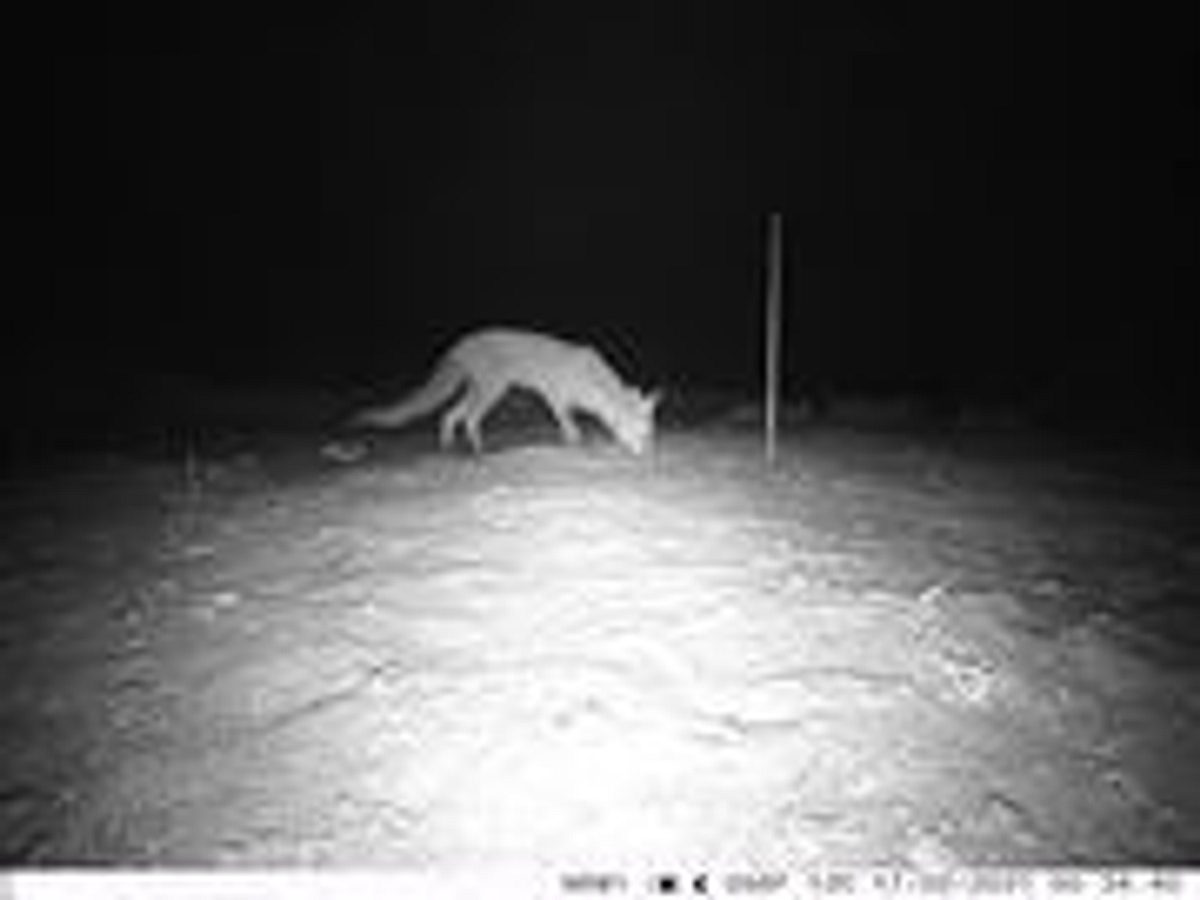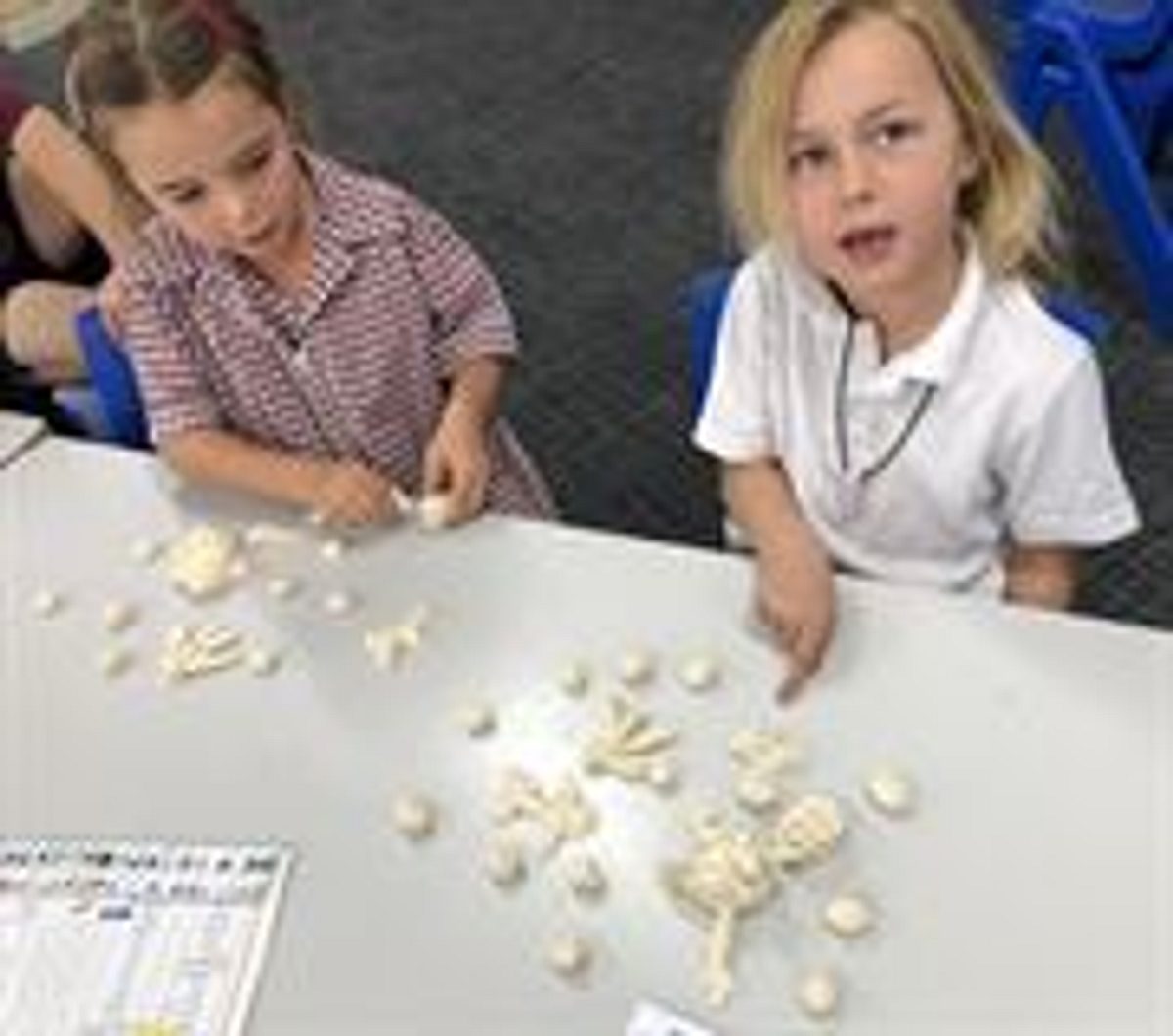STAR news 2021
- Streaky students learn about protecting shorebirds
- Learning through art and play at Whyalla
- Saltmarshes and blue carbon
- Conservation of beach-nesting birds: home school workshop
- Targeted fox control on coastal properties to help threatened Hooded Plovers
- Off-road enthusiasts urged to respect saltmarshes
- Saltmarsh profile survey and soil blue carbon storage sampling
- Arno Bay culvert works complete to protect saltmarsh
- Hooded Plovers breeding success
- Hoodie chicks at southern EP beach
Hooded Plovers nesting at Fishery Bay - a first in 8 years!
December 8, 2021
They may be hard to spot but a member of the community has found threatened Hooded Plovers nesting at Fishery Bay beach on southern EP. This is the first time in 8 years that we have official evidence of nesting here! With District Council of Lower Eyre Peninsula approval, we’ve installed protective fencing and signage. When you are visiting Fishery Bay, please keep well away from the fenced off area and the birds, to give them the best chance of survival.

Hoodie chicks at southern EP beach
October 14, 2021
Hooded Plovers were discovered at a southern EP beach in September 2021 for the first time this season during our monitoring and now they have chicks! This video shows them at around two weeks old.
The adjacent landholder started fox baiting after this discovery which will help to protect the threatened Hooded Plovers chicks, especially as they can’t fly until they are 5 weeks old.
Now is a really important time for our hoodies – they are nesting in the hope of getting chicks to the flying stage when they less vulnerable. So please keep an eye out for our signs on your local Eyre Peninsula nesting beaches that remind you to keep your distance, stick to the water’s edge & keep dogs on leashes.
Hooded Plovers breeding success
August 10, 2021
Local landscape officers and BirdLife trained volunteers are encouraged to learn at least six Hooded Plover chicks have made it to flying age across Eyre Peninsula beaches during the past breeding season.
The Hooded Plover is a resident beach nesting bird listed as a threatened species under the Environment Protection and Biodiversity Conservation (EPBC) Act. They lay their eggs in a shallow scrape on the beach above the high tide mark between August and April, leaving them susceptible to a variety of disturbances including off-leash dogs, vehicles driving on the beach and introduced predators, such as cats and foxes.
Eyre Peninsula Landscape Board Landscape Officer, Rachael Kannussaar says she is pleased the efforts of staff and volunteers have likely contributed to helping a number of Hooded Plover chicks reach the fledgling stage this season, however there is more work to do to boost their success.
“Hooded Plovers have a very low nesting success rate,” Ms Kannussaar says.
“On Eyre Peninsula, monitoring during the 2020-21 breeding season has revealed only one in five nests successfully hatched, and of the nests that were able to hatch, only one in five chicks reached flying age 35 days later.
“These rates are lower than is required to reach the national goal for maintaining the Hooded Plover population.
“On Eyre Peninsula, 23 Hooded Plover pairs were visited regularly to monitor nesting progress and document threats across the nesting season. To have six known chicks fledge across the Eyre Peninsula region is a good outcome, however this is five less than last year.”

Arno Bay culvert works complete to protect saltmarsh
June 30, 2021
The Arno Bay saltmarsh environment has been given a helping hand with a new culvert now installed on a road that runs parallel to the saltmarsh, which will improve hydrological flows under the road.
The Eyre Peninsula Landscape Board has worked with the District Council of Cleve on the Cowley Road culvert as part of the Saltmarsh Threat Abatement and Recovery (STAR) project.
Team Leader of Landscape Operations (East) with the Eyre Peninsula Landscape Board, Tim Breuer, says the culvert installation will help restore the threatened temperate coastal saltmarsh habitat in the Arno Bay area.
Any local councils, landholders or community who may have an idea or project sites where hydrological flow on-ground works could improve the condition of saltmarsh, are encouraged to get in contact Tim Breuer or Liz McTaggart from the Eyre Peninsula Landscape Board for funding opportunities in the 22-23 financial year.
Email them on EPLBAdmin@sa.gov.au or call Liz on 0437 297 992 or Tim on 0488 000 481.

Saltmarsh profile survey and soil blue carbon storage sampling
June 24, 2021
Profiling of saltmarsh communities across the Eyre Peninsula is nearly at the half-way mark, recording exactly what species are in the saltmarsh, analysing changes to sites over time and shedding new light on organic blue carbon stocks.
The latest saltmarsh profile survey was completed at Acraman Creek – between Streaky Bay and Ceduna – as part of a baseline data comparison of the condition of saltmarsh at 11 sites across the Eyre Peninsula.
During the field work, Adelaide University Researcher Dr Alice Jones and PhD student Sophie Russell collected soil cores from different types of saltmarsh vegetation communities at different heights along the profile.
Funding provided by the Eyre Peninsula Landscape Board and Coast Protection Board is being used to assess blue carbon stocks in coastal ecosystems at Acraman Creek as well as Davenport Creek.
Blue carbon is the term used to describe organic carbon that is stored in the plants and soils of coastal ecosystems, like saltmarshes, seagrasses and mangroves.

Off-road enthusiasts urged to respect saltmarshes
June 22, 2021
Four-wheel drivers, motor bike riders, and Eyre Peninsula Landscape Board staff have united in a community call to action for more responsible off-road recreation around coastal saltmarsh areas.
As part of the push to get drivers of off-road vehicles to take care of the Eyre Peninsula environment, the EP Landscape Board has made a video, urging those who use the coastal environment for recreation to follow these steps:
- Be respectful of residents and the environment;
- Keep to existing tracks and stay off vegetation;
- Keep engine noise to a minimum near houses; and
- Take your rubbish with you.
Keeping to the Tracks
Targeted Fox control on coastal properties to help threatened Hooded Plovers
May 24, 2021
Our officers recently worked with coastal landholders in the Port Neill and Tumby Bay area to implement a fox control program as part of the region’s Hooded Plover conservation program. Monitoring over summer has shown foxes to be a key threat to nesting Hooded Plovers along this section of coast.
Staff worked with eight landholders to bait private property along more than 20km of coastline. Baits were laid at 28 locations, with baits taken from 16 of these - some more than once - giving an indication of the high number of foxes in the area. In addition, a fox den mapping and treatment program has commenced to ensure best practice fox control is implemented.
This work will help at least 10 known Hooded Plover nesting territories, a number of these monitored regularly thanks to two projects supported through the Australian Government’s National Landcare Program, BirdLife’s Protect the Hooded Plover project, and our Saltmarsh Threat Abatement and Recovery project.



Streaky students learn about protecting shorebirds
April 29, 2021
Our Streaky Bay landscape officers have been teaching local students about protecting shorebirds through creative activities. We helped students from Streaky Bay Area School’s R/1 class to sculpt shorebird figurines and create Hooded Plover habitat collages using natural materials.
The session aims to increase awareness of threatened species including the Hooded Plover; the importance of protecting breeding habitat; and what actions students and their families can take to protect shorebirds when sharing local beaches with them.
Thanks to Luna and Elsie for sharing their creations with us.

Learning through art and play at Whyalla
April 28, 2021
Kids had fun playing games and being creative while learning all about beach-nesting birds at our Whyalla Library school holiday sessions.
The participants learnt that oyster catchers, red-capped plovers and hooded plovers live on Eyre Peninsula beaches and breed in the summer months when people use beaches the most. Sadly due to disturbance, trampling, and predators (including our pet pooches) only 1 in 10 hooded plover nests hatch, and only 1 in 5 chicks survive until they can fly.
Workshop participants were told how we can all help boost the survival of beach nesters by observing ‘Sharing the Shoreline’ signs, staying below the high water mark, keeping dogs on a leash, giving nesting birds and chicks space, and watching where you walk, as eggs and chicks are well camouflaged and hard to see.
If you would like to learn more about beach-nesting birds, visit the Birdlife website.
Teachers can bring the coast to the classroom with these great education resources.


Saltmarshes and blue carbon
April 19, 2021
Did you know that saltmarshes sequester as much as 50 times the amount of carbon in their soil per hectare as a tropical forest?
The key difference between these coastal habitats and forests is that mangroves, seagrasses and the plants in saltmarshes are extremely efficient at burying carbon in the sediment below them where it can stay for centuries or even millennia.
This makes protecting saltmarshes highly important for national and regional climate change mitigation strategies. We’ve been working with University of Adelaide researchers through our STAR project, to study the efficiency of blue carbon in Eyre Peninsula mangrove-saltmarsh systems to help determine their conservation value in monetary terms.
Pictured is our one of our landscape officers helping with this research by collecting data on sediment accumulation in multiple saltmarsh and locations along the east coast of the Eyre Peninsula.
Read more about the Blue Carbon Strategy for South Australia.

Conservation of beach-nesting birds: home school workshop
March 31, 2021
Landscape officers led an education session with home school families from across Lower Eyre Peninsula, teaching them about Eyre Peninsula's beach-nesting birds with a particular focus on the Hooded Plover. 3D printed eggs were taken in as props to show participants the actual size of these small eggs, and how camouflage is used to disguise them in the coastal environment. The landscape officers talked about how we can all watch for the birds when visiting a Hooded Plover nesting beach and how we can help them successfully nest and raise their chicks.
The students were also taken on beach walk where they were able to walk along a real Hooded Plover nesting territory. Participants had the opportunity to use a spotting scope and binoculars, to observe the birds in the area from a safe distance.
The children also had the opportunity to play the Hooded Plover floor game during lunchtime. This was the first time on Eyre Peninsula the floor game had been used.


Follow us
See our news updates as they happen by following us on Facebook or Twitter.
The Saltmarsh Threat Abatement and Recovery project is supported by the Eyre Peninsula Landscape Board, through funding from the Australian Government’s National Landcare Program.









